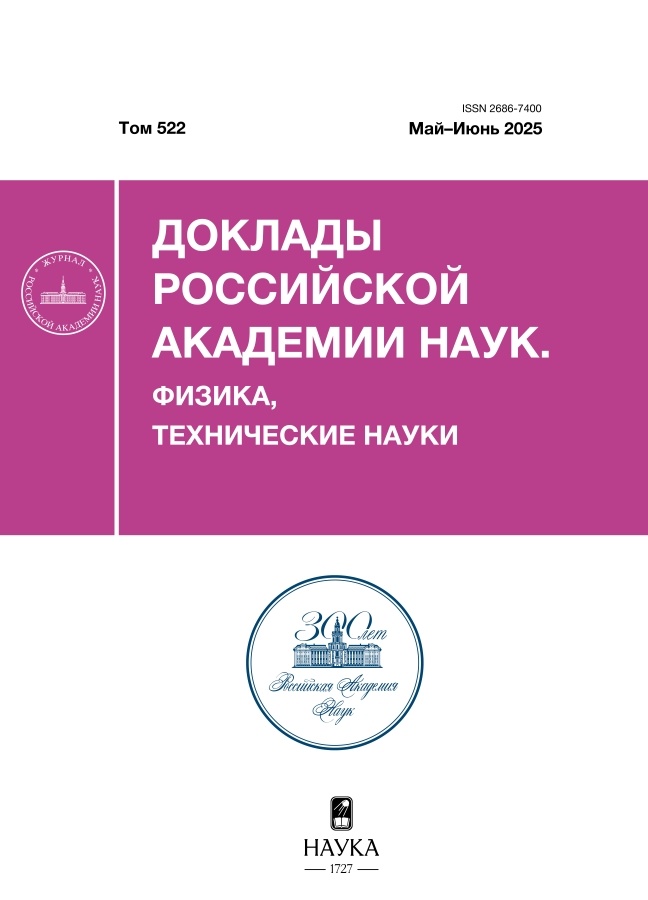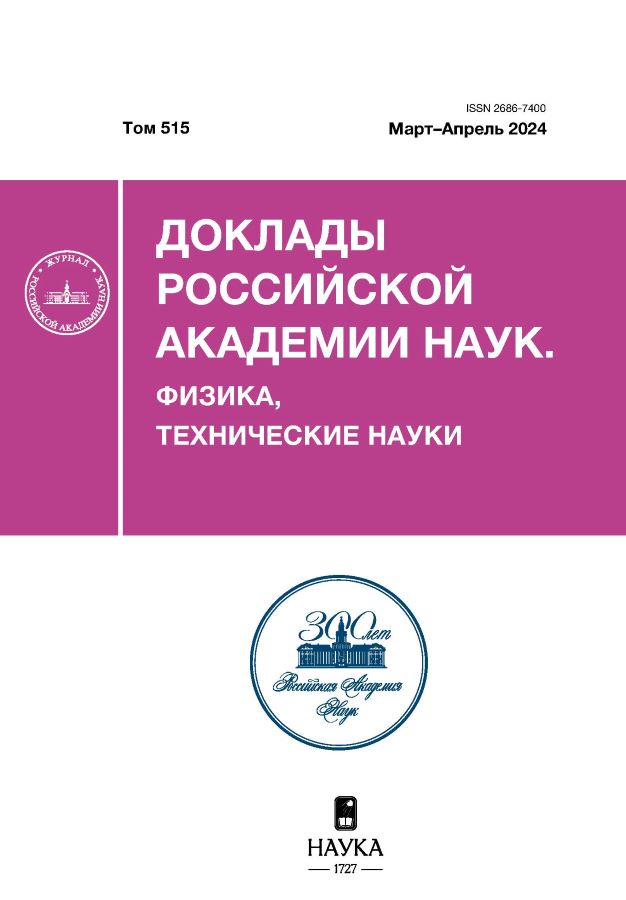Лазерно-индуцированная абляция и десорбция вольфрамовых пленок, насыщенных дейтерием
- Авторы: Смирнова Е.В.1,2, Медведев О.С.1,3, Раздобарин А.Г.1,2, Елец Д.И.1,3,2, Снигирев Л.А.1,2, Шубин Я.Р.1,2
-
Учреждения:
- Физико-технический институт им. А.Ф. Иоффе
- Санкт-Петербургский государственный университет
- Национальный исследовательский ядерный университет “МИФИ”
- Выпуск: Том 515, № 1 (2024)
- Страницы: 19-26
- Раздел: ФИЗИКА
- URL: https://jdigitaldiagnostics.com/2686-7400/article/view/651795
- DOI: https://doi.org/10.31857/S2686740024020043
- EDN: https://elibrary.ru/KHRXIS
- ID: 651795
Цитировать
Полный текст
Аннотация
Сравниваются методы лазерно-индуцированной десорбции (ЛИД) и абляции (ЛИА) для оценки возможности абсолютного количественного анализа содержания изотопов водорода в материалах первой стенки термоядерных реакторов. Пленки вольфрама, насыщенные дейтерием, толщиной 300–400 нм на кремниевой подложке использовались как модельные образцы. Для реализации ЛИД образцы облучались лазерными импульсами с длительностью 200 мкс и плотностью энергии 50–150 Дж/см2, для ЛИА – 12 нс и 5–15 Дж/см2. Регистрация остаточных газов проводилась методом квадрупольной масс-спектрометрии. В режиме ЛИД проведено компьютерное моделирование нагрева лазерным импульсом. Результаты моделирования и эксперимента показали, что нагрева при плотности энергии 100–150 Дж/см2 достаточно для дегазации пленок вольфрама исследуемой толщины. Сравнение количества десорбированного дейтерия в режиме ЛИД (150 Дж/см2) и ЛИА (15 Дж/см2) показывает, что оно идентичное в пределах погрешности измерения и равно 4.15±0.15·1014 см-2.
Об авторах
Е. В. Смирнова
Физико-технический институт им. А.Ф. Иоффе; Санкт-Петербургский государственный университет
Автор, ответственный за переписку.
Email: evsmirnova@mail.ioffe.ru
Россия, Санкт-Петербург; Санкт-Петербург
О. С. Медведев
Физико-технический институт им. А.Ф. Иоффе; Национальный исследовательский ядерный университет “МИФИ”
Email: evsmirnova@mail.ioffe.ru
Россия, Санкт-Петербург; Москва
А. Г. Раздобарин
Физико-технический институт им. А.Ф. Иоффе; Санкт-Петербургский государственный университет
Email: evsmirnova@mail.ioffe.ru
Россия, Санкт-Петербург; Санкт-Петербург
Д. И. Елец
Физико-технический институт им. А.Ф. Иоффе; Национальный исследовательский ядерный университет “МИФИ”; Санкт-Петербургский государственный университет
Email: evsmirnova@mail.ioffe.ru
Россия, Санкт-Петербург; Москва; Санкт-Петербург
Л. А. Снигирев
Физико-технический институт им. А.Ф. Иоффе; Санкт-Петербургский государственный университет
Email: evsmirnova@mail.ioffe.ru
Россия, Санкт-Петербург; Санкт-Петербург
Я. Р. Шубин
Физико-технический институт им. А.Ф. Иоффе; Санкт-Петербургский государственный университет
Email: evsmirnova@mail.ioffe.ru
Россия, Санкт-Петербург; Санкт-Петербург
Список литературы
- Mukhin E.E. et al. In situ monitoring hydrogen isotope retention in ITER first wall // Nuclear Fusion. 2016. V. 56. № 3. P. 036017. https://doi.org/10.1088/0029-5515/56/3/036017
- Roth J. et al. Tritium inventory in ITER plasma-facing materials and tritium removal procedures // Plasma Physics and Controlled Fusion. 2008. V. 50. № 10. P. 103001. https://doi.org/10.1088/0741-3335/50/10/103001
- Родина Н.Д., Морозова Н.Б., Введенский А.В. Кинетика выделения атомарного водорода и водородопроницаемость сплавов Ag-Pd в щелочной среде // Конденсированные среды и межфазные границы. 2020. Т. 22. № 2. С. 96–104. https://doi.org/10.17308/kcmf.2020.22/2853
- Dellasega D. et al. Deuterium retention and surface modifications of nanocrystalline tungsten films exposed to high-flux plasma // J. Nuclear Materials. 2015. V. 463. P. 989–992. doi: 10.1016/j.jnucmat.2014.11.025
- Skinner C.H. Tritium retention and removal in Tokamaks // AIP Conference Proc. American Institute of Physics, 2009. V. 1095. № 1. P. 127–145. https://doi.org/doi: 10.1063/1.3097310
- Krat S.A. et al. A setup for study of co-deposited films // J. Instrumentation. 2020. V. 15. № 1. P. P01011. https://doi.org/10.1088/1748-0221/15/01/P01011
- Rubel M. et al. Efficiency of fuel removal techniques tested on plasma-facing components from the TEXTOR tokamak // Fusion Engineering and Design. 2012. V. 87. № 5–6. P. 935–940. https://doi.org/10.1016/j.fusengdes.2012.02.054
- Katayama K., Nishikawa M., Yamaguchi J. Isotope effect in hydrogen isotope exchange reaction on first wall materials // J. Nuclear Science and Technology. 2002. V. 39. № 4. P. 371–376. https://doi.org/10.1080/18811248.2002.9715206
- Hodille E.A. et al. Retention and release of hydrogen isotopes in tungsten plasma-facing components: the role of grain boundaries and the native oxide layer from a joint experiment-simulation integrated approach // Nuclear Fusion. 2017. V. 57. № 7. P. 076019. https://doi.org/10.1088/1741-4326/aa6d24
- Moshkunov K.A. et al. Air exposure and sample storage time influence on hydrogen release from tungsten // J. Nuclear Materials. 2010. V. 404. № 3. P. 174–177. https://doi.org/10.1016/j.jnucmat.2010.07.011
- Zlobinski M. et al. Laser induced desorption as tritium retention diagnostic method in ITER // Fusion Engineering and Design. 2011. V. 86. № 6–8. P. 1332–1335. https://doi.org/10.1016/j.fusengdes.2011.02.030
- Paris P. et al. Comparison of LIBS results on ITER-relevant samples obtained by nanosecond and picosecond lasers // Nuclear Materials and Energy. 2019. V. 18. P. 1–5. https://doi.org/10.1016/j.nme.2018.11.018
- Maddaluno G. et al. Detection by LIBS of the deuterium retained in the FTU toroidal limiter // Nuclear Materials and Energy. 2019. V. 18. P. 208–211. https://doi.org/10.1016/j.nme.2018.12.029
- Gierse N. et al. In situ characterisation of hydrocarbon layers in TEXTOR by laser induced ablation and laser induced breakdown spectroscopy // J. Nuclear Materials. 2011. V. 415. № 1. P. S1195–S1198. https://doi.org/10.1016/j.jnucmat.2010.11.055
- Van Der Meiden H.J. et al. Monitoring of tritium and impurities in the first wall of fusion devices using a LIBS based diagnostic // Nuclear Fusion. 2021. V. 61. № 12. P. 125001. https://doi.org/10.1088/1741-4326/ac31d6
- Razdobarin G.T. et al. Detecting dust on plasma-facing components in a next-step tokamak using a laser-induced breakdown spectroscopy technique // Fusion Science and Technology. 2002. V. 41. № 1. P. 32–43. https://doi.org/10.13182/FST02-A198
- Liu J. et al. Study of spectral intensity of the laser ablated tungsten plasma and ablation mass at various laser spot sizes and laser fluence in vacuum environment // Spectrochimica Acta Part B: Atomic Spectroscopy. 2023. V. 199. P. 106569. https://doi.org/10.1016/j.sab.2022.106569
- Zhang D.L. Processing of advanced materials using high-energy mechanical milling // Progress in Materials Science. 2004. V. 49. № 3–4. P. 537–560. https://doi.org/10.1016/S0079-6425(03)00034-3
- Yehia-Alexe S.A. et al. Considerations on hydrogen isotopes release from thin films by laser induced ablation and laser induced desorption techniques // Spectrochimica Acta Part B: Atomic Spectroscopy. 2023. V. 208. P. 106774. https://doi.org/10.1016/j.sab.2023.106774
- Zlobinski M. et al. Laser-Induced Desorption of co-deposited Deuterium in Beryllium Layers on Tungsten // Nuclear Materials and Energy. 2019. V. 19. P. 503–509. https://doi.org/10.1016/j.nme.2019.04.007
- Krat S. et al. Tungsten-deuterium co-deposition: Experiment and analytical description // Vacuum. 2018. V. 149. P. 23–28. https://doi.org/10.1016/j.vacuum.2017.12.004
- Kajita S. et al. Plasma-assisted laser ablation of tungsten: Reduction in ablation power threshold due to bursting of holes/bubbles // Applied Physics Letters. 2007. V. 91. №. 26. https://doi.org/10.1063/1.2824873
Дополнительные файлы











